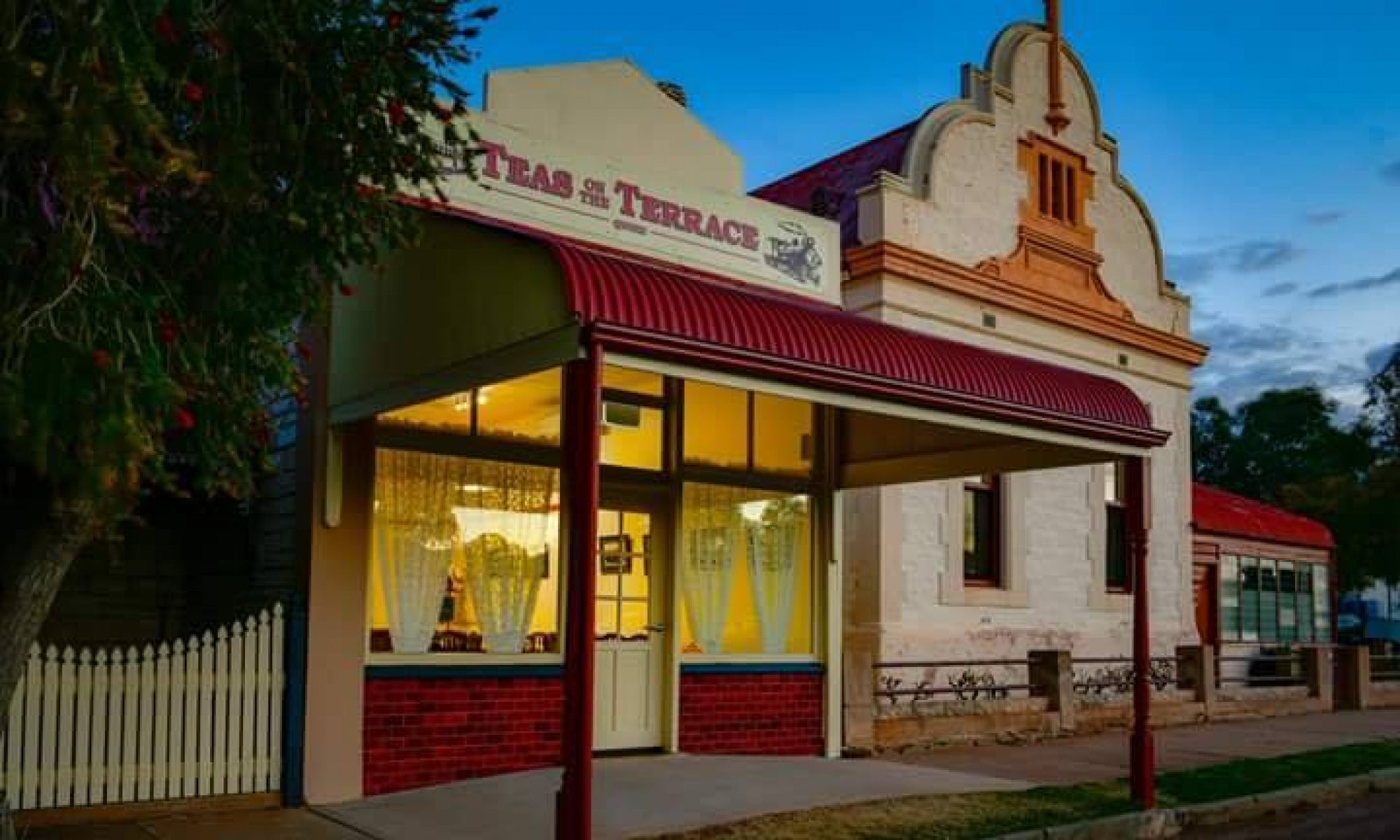Established in the traditional homelands of the Nukunu people, and just south of the homelands of the Wartabanggala division of the Barngarla ( aka Parnkalla) people, the Quorn townsite was first surveyed by Godfrey Walsh in 1878 and named after Quorndon in Leicestershire, UK, as part of the preparations for building the Port Augusta and Government Gums Railway northwards.
The narrow gauge railway line from Port Augusta to Quorn opened in 1879 and was subsequently extended north to Government Gums (Farina) in 1882, Marree in 1884, Oodnadatta in 1890 and Alice Springs in 1929. This railway line later became known as the Great Northern Railway and finally the Central Australia Railway.
Afghan cameleers and camels were brought to Australia between 1870 and 1920 to support a vast network of camel train routes that spread out across inland Australia from the railway.
In 1917, Quorn became the crossroads of any north–south (on the Central Australian Railway to Oodnadatta) or east–west rail travel in Australia, when the Trans-Australian Railway was completed between Port Augusta and Kalgoorlie. Quorn became an important town and many fine buildings were built as the town expanded, including the Transcontinental and Grand Junction Hotels.
During the cool months of 1923 the South Australian Railways decided to shorten the time taken by trains for passengers and perishable freight between Adelaide and Oodnadatta. Before this time, trains had stopped overnight at stations en-route, including Quorn. After 1923, a sleeping car was provided and the train rescheduled to continue without stabling overnight. Through passengers could leave Adelaide a day later, on Thursday mornings, and return a day earlier than under the previous timetable.
On 30 August 1923 the inaugural through passenger train ran from Terowie to Oodnadatta. It was on this trip that the train name the Ghan had its origin. A large crowd of local people gathered at Quorn station to witness the arrival of the new train with its sleeping car.
When the train pulled into Quorn yard it was almost dusk. An Afghan passenger wasted no time in getting off the train and sprinting to a quiet corner of the yard where he could kneel to face Mecca and recite his ritual evening prayers. A railwayman made the joking remark that if he was the only passenger on the train it should be called the “Afghan Express“.
Apparently the name proved popular and was adopted immediately, later being shortened to the ‘Ghan Express, and then to the Ghan, by which name the train was known to local railwaymen for a couple of years prior to the takeover by the Commonwealth Railways in 1926.
Large workshops were established at Quorn, servicing and maintaining equipment for the Great Northern Railway and later the Central Australia Railway.
Quorn’s role as a crossroads was lost when a standard gauge railway connection was opened between Port Pirie Junction and Port Augusta in 1937, meaning east–west trains bypassed Quorn.
During World War II, Quorn was a vital service point for trains heading north to Alice Springs that carried over 1,000,000 troops heading to Darwin and on to Papua New Guinea. Trains services through Quorn peaked at over 50 per day during and immediately after the period of World War II. The Quorn branch of the Country Women’s Association (CWA) of South Australia played a vital role in feeding the troops, and the branch Convenor, Mrs Pearl Hastwell, was made an MBE in recognition of these efforts. Train services during this time also included coal mined at Leigh Creek being moved to the newly opened Playford A Power Station in Port Augusta.
During the 1950’s, the need for more coal to be brought south for a second Port Augusta power station led to a decision to build a new standard gauge railway line on the western side of the Flinders Ranges from Stirling North to Brachina, then following the original narrow gauge route through Leigh Creek and to Marree. This new line bypassed Quorn and took away railway traffic through the Pichi Richi Pass, and much freight traffic through Quorn. The last Ghan ran through the Pichi Richi Pass past our front door on 11 August 1956. The Commonwealth Railways moved their workshops to Port Augusta, with loss of much local employment. The only railway services left operating through Quorn were freight between Peterborough and Hawker. As a result, Quorn’s importance diminished and eventually in 1980 the railway was completely closed.
In 1973, a group of railway enthusiasts assembled with the desire to preserve the unique bridges and stone work built in the previous century that formed the railway through the Pichi Richi Pass between Quorn and Stirling North, and the Pichi Richi Railway Preservation Society was formed. Although the original intention was to just preserve the railway structures through the Pichi Richi Pass, the Society soon acquired operable railway rollingstock and locomotives and today provides a tourist railway service through the Pichi Richi Pass from Quorn to Port Augusta.
More than forty films have been made in Quorn and surrounding areas, including The Sundowners, Sunday Too Far Away, Gallipoli, the Shiralee and Russell Crowe’s The Water Diviner. Quorn has many current attractions including the native Powell Gardens and unique architecture, and is rightly known as the gateway to the Flinders Ranges.
